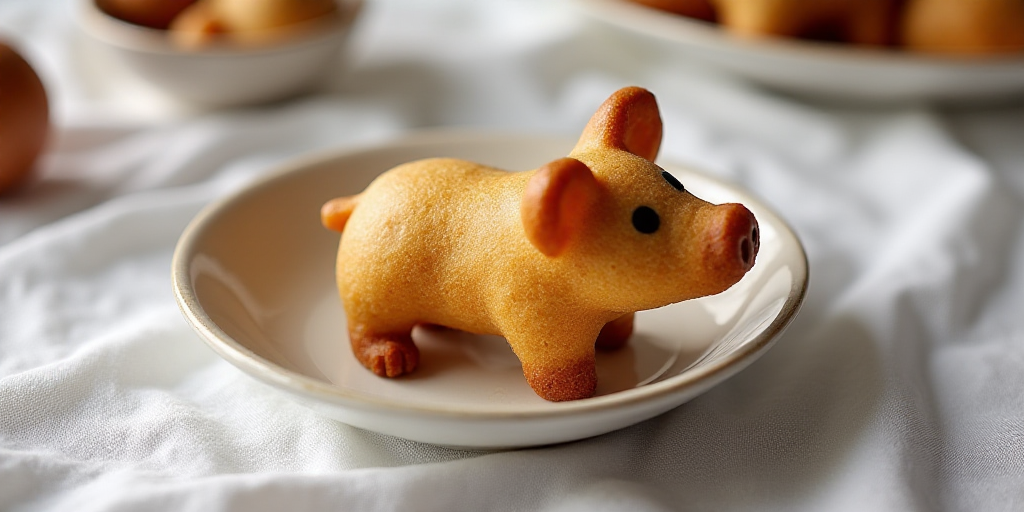Introduction
The piloncillo-glazed piglet bread, affectionately known as “marranito” or “cochinito,” is a bread that instantly evokes childhood and popular celebration. Its origin, like many culinary gems in Mexico, is a result of the colonial-era culinary fusion. It was born from the blending of European baking techniques brought by the Spanish with deeply rooted ingredients in Mexican land.
The Piloncillo: The Heart of the Bread
The star ingredient is undoubtedly the piloncillo, an unrefined cane sugar syrup. Descendant of colonial-era sugarcane presses, the piloncillo brings not only sweetness but a complexity of flavors from molasses, caramel, and even a hint of smokiness that refined white sugar simply cannot replicate. It is the soul of the bread.
Evolution of the Recipe
Originally, one of its oldest versions was reportedly the “pan de pulque,” as this fermented maguey drink served as a natural leavening agent, giving the bread a unique texture and flavor. Over time, with the popularization of commercial yeast and baking soda, the recipe evolved into what we know today—more akin to a dense, soft cookie.
The Piglet Shape: Symbolism and Celebration
Why the piglet shape? The most widely accepted theory relates to symbolism. Introduced by the Spanish, pigs became a crucial animal in the economy and diet of New Spain. They represented abundance, celebration, and festivity. Shaping the bread into a piglet was a way to honor this prosperity and associate this sweet treat with special moments, such as patron saint fairs and, of course, patriotic celebrations.
A Shared Treasure
This bread does not belong to a single region; it’s a shared treasure. You can find it in bread stalls from the north to the south of the country, each with its unique touch. Some are more spiced with cloves, others darker due to the type of piloncillo used, some crunchy, and others soft.
Key Questions and Answers
- What is the piloncillo-glazed piglet bread? It’s a traditional Mexican sweet bread, also known as “marranito” or “cochinito,” characterized by its piloncillo glaze and piglet shape.
- What makes this bread unique? Its distinct flavor comes from the unrefined piloncillo, which adds a complexity of molasses, caramel, and smokiness. The bread’s shape symbolizes abundance and celebration, linking it to Mexican patriotic and religious festivities.
- Where can this bread be found? It’s a popular treat in Mexico, available in bread stalls across the country, each offering its unique variation.






